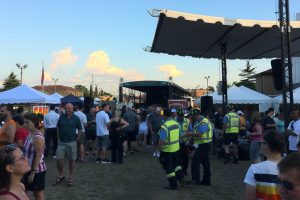Falling asleep behind the wheel is dangerous. In the best of cases, all that will happen when a driver nods off is that they slow down a bit or swerve a little before they wake up. On average, that driver will veer into oncoming traffic or off the road before something startles them awake, like a car horn or the pull of roadside gravel.
In the worst cases, driving while drowsy will lead to an accident. A driver will fall asleep behind the wheel, lost control of their vehicle, and cause a crash. This can injure them, their passengers, and anyone else that happens to be involved.
What Do Accidents Caused By Drowsy Drivers Look Like?
The National Highway Traffic Safety Administration (NHTSA) has collected their findings on driving while fatigued or sleepy and compiled those findings into a comprehensive report. According to this report, the average drowsy driving incident involves a driver that is alone in their car, going down a high-speed road late at night, early in the morning, or in the middle of the afternoon.
The driver is most often a man, likely to either be young (under the age of 29) and a shift worker. They will fall asleep and veer into traffic or off the road. It is unlikely they will wake up until after a serious crash has taken place.
It is estimated that as many as 6,000 fatal crashes each year have been instigated by this sort of pattern and all the result of drowsy driving. That estimate is up from the 5,000 estimated deaths resulting from a drowsy driving-related accident in 2015.
What Effect Does Drowsiness Have on The Brain of a Driver?
People are meant to get a certain amount of sleep. For those under 21, 8 hours or more of sleep is necessary for optimal levels of cognitive function. For adults over 21, as few as 7 hours could be adequate. Any less and it’s possible that a person will become high-risk for drowsy driving.
When a person of any age doesn’t get enough sleep, their reaction times are slowed, and their concentration dims. By the time a person feels “sleepy”, they may already be experiencing “microsleep.” This means that they may be falling asleep for a few seconds at regular intervals. A microsleep of just four seconds is enough to drive the length of a football field and more than enough time to be in a severe accident.
Signs That Someone is Too Tired to Drive Safely
While most people can tell when they’re sleepy, it can still be tempting to drive or let someone else drive that claims to be “wide awake” or “just a little tired.” Be safe and ask yourself the following questions about you or the person behind the wheel:
- Can they keep their eyes open?
- Have they frequently been nodding off or blinking very slowly?
- Do they seem drunk? A significant lack of sleep can mimic the effects of mild intoxication.
- Have they been yawning often?
- Can they stay in their lane, remember driving past certain landmarks, or keep their speed steady?
If any of these questions lead you to question how awake you are, it may be time to pull over into a safe space and take a short nap. Even a nap of just 15 to 20 minutes could be enough to prevent an accident related to drowsy driving.
Call our Chicago car accident lawyers at (708) 400-0000 for a free consultation or contact us online or by email.
Costa Ivone, LLC | 311 N Aberdeen St #100B, Chicago, IL 60607 | (708) 400-0000





